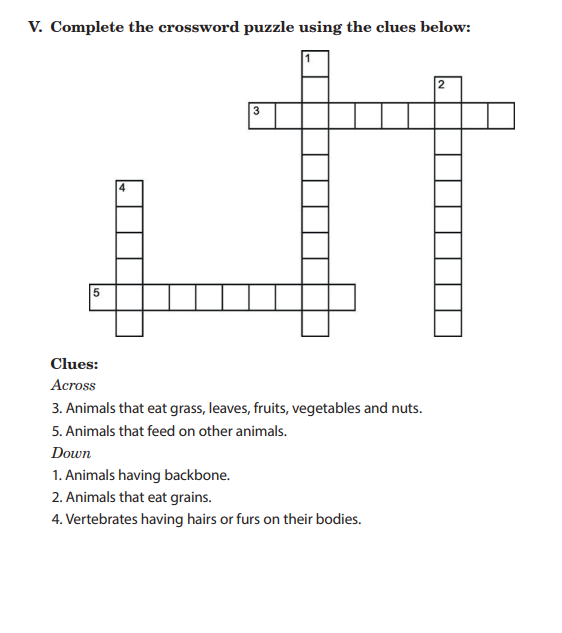General
UNIT 9: Animals
There are different types of animals in the world we live in. Many animals are quite similar to each other.
Others are quite different. Animals can be classified based on their similarities.


4. They have lungs or gills for breathing.
5. They have closed circulatory system.


They are mammals. They have the following characteristics:
1. Mammals have hairs on their body.
2. They (females) give birth to their young ones.
3. They (mothers) feed milk to their young ones.
Cow
Cow is the best example of a mammal. It possesses a backbone,
hair and mammary glands.
It gives birth to its young ones.




These animals are called birds.
They have the following characteristics:
1. They have a backbone.
2. They have streamlined body.
3. They have a beak, wings and feathers.
4. Their feet are covered with scale.
5. They lay eggs.

Hen is the best example of a bird.
It possesses a backbone, beak, wing and feathers.
It lays eggs.





 Tilapia and tuna
Tilapia is the best example of a fish.
Tilapia and tuna
Tilapia is the best example of a fish.It possesses backbone. It lives in water. It has scales on its body. It breathes through gills.



These animals are called
 . They have the following characteristics:
. They have the following characteristics: 1. They have a backbone.
2. They move by crawling.
3. They have scales on their body.
4. They lay eggs on land.

Snake is the best example of a reptile. It possesses a backbone and scales on its body.
It moves by crawling. It also lays eggs.






2. Each insect has a pair of antennae or feelers.
3. Insects like butterfly have a proboscis to suck nectar from flowers.
4. Body of an insect is made up of head, thorax and abdomen.
5. Most insects have wings and can fly.
6. Insects breathe through their spiracles (or air holes).










The five most well-known classes of vertebrates are mammals, birds, reptiles, amphibians and fish.
Insects are animals with jointed legs and segmented body.
All animals take oxygen from the air and give out carbon dioxide.
Aquatic animals such as fish breathe through gills. Gills are found on both sides of the head.
Animals move from one place to another. This movement of animals is called locomotion
Herbivores eat grass, leaves, fruits, vegetables and nuts.
Carnivores eat flesh of other animals.
All animals give birth to their young ones to continue their own kind on earth
. This process is known as reproduction.

Do these review exercises in your exercise book.
I. Fill in the blanks with the correction options
1. Animals having backbones are called ............ .
(a) vertebrates (b) invertebrates (c) both (d) none of these
2. Animals lacking backbones are called ............ .
(a) vertebrates (b) invertebrates (c) both (d) none of these
3. .................. is a mammal.
(a) Frog (b) Dog (c) Snake (d) Fish
4. .................. is an amphibian.
(a) Snake (b) Lizard (c) Newt (d) Crocodile
5. ............... is an egg-laying animal.
(a) Bat (b) Hen (c) Whale (d) Cat
6. .................. is a rodent.
(a) Sparrow (b) Squirrel (c) Crow (d) Snake
II. State whether the followings statements are true or false :
1. Mammals have hairs on their body.
2. Reptiles move by Crawling
3. An adult frog breathes though gills.
4. Insects have four legs.
5. Vulture is a granivore.

IV. Answer the following question briefly :
1. Define vertebrates.
2. List all five major classes of vertebrates.
3. Name two reptiles that lay eggs on land.
4. What do fish use for breathing?
5. Name two animals that breathe through skin.
6. Name two animals that breathe through gills.
7. Name two animals that breathe through spiracles.
8. Write the name of two amphibians.
9. Define invertebrates.
10. List any two properties of invertebrates.
11. Write any two characteristics of an insect.
12. Which group do rabbits and squirrels belong to?

